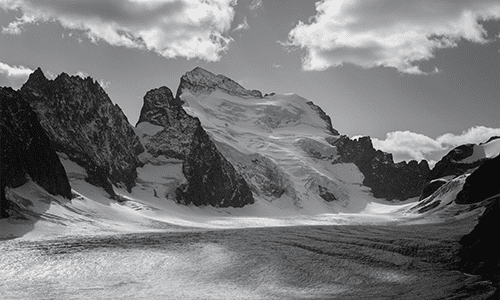

SAMAYA x THOMAS PUEYO
A LA DÉCOUVERTE DE FACES INEXPLORÉES AU TADJIKISTAN

©Photographie réalisée par Thomas Pueyo @thomaspueyo
Le Groupe Excellence Ski Alpinisme National (GESAN) issu de la FFCAM compte une dizaine de skieurs sélectionnés sur deux ans pour réaliser une expédition exploratoire au cœur d’endroits sauvages. En mars 2022, le GESAN a porté son choix sur l'Asie centrale, particulièrement le Tadjikistan, pays plutôt inconnu, car encore fermé il y a peu et où le tourisme est extrêmement faible l’hiver. Thomas Pueyo nous raconte leur expédition.
« Ça a d’abord été un gros boulot de cartographie.
La première étape a été de trouver des contacts sur place, essayer de voir s'il y avait quelques personnes qui y avaient skié, afin de déterminer un massif, car la région est immense. On a rassemblé des vieilles cartes militaires, pas du tout précises, mais nous donnant quand même quelques infos et on a beaucoup utilisé Google Maps. La langue internationale est le russe, puisqu’il s’agit d’une ancienne République soviétique, ce qui ajoute la barrière de la langue.
Il fallait aussi réfléchir à la meilleure fenêtre météo, pour éviter la mousson. On a élaboré plusieurs plans avec plusieurs massifs, pour faire face à toutes les conditions possibles sur place et avoir des solutions de repli.
Nous avons eu beaucoup de chance, il a fait super beau.

©Photographie réalisée par Thomas Pueyo @thomaspueyo
Le plan A était d'aller dans une partie du Pamir, cette extrémité occidentale de l'Himalaya, dans une zone qu'on avait identifié comme skiable.
On a fait une journée de 4x4 à partir de Douchanbé, la capitale, pour s’enfoncer dans une première vallée, première de notre itinéraire d’une dizaine de jours. Les zones que nous allions traverser étaient complètement désertiques, nous étions en totale autonomie, portant tout notre équipement et notre nourriture sur le dos, l’utilisation de pulka étant rendue impossible par le terrain.
On a eu des journées où on faisait des liaisons entre camps. Quand on trouvait des vallées qui s'y prêtaient, on posait le camp sur plusieurs jours, puis on multipliait les ascensions en étoiles, sur des faces de plus de 5500 mètres.
On comptait chaque gramme de tout notre équipement. Avoir des tentes ultra light était presque obligatoire.

©Photographie réalisée par Thomas Pueyo @thomaspueyo
Les lignes que nous avons tracées étaient sur des montagnes pour lesquelles nous n’avions trouvé aucun historique. C’étaient les premières spatules qui étaient posées à ces endroits-là. C’était quasiment inédit à chaque fois.
C'est quand même un peu stressant, parce qu’on est dans des endroits où il n’y a aucun secours possible. On prend beaucoup plus de marge, du fait que là-bas, le moindre souci peut devenir extrêmement complexe.
L'aspect le plus important de notre expédition, ce sont les habitants. C’est une culture, un pays que personne ne connaît. Après 10 jours de totale autarcie, nous sommes arrivés dans un petit village appelé Jilandi, avec quelques vaches et le camion soviétique des années 1940.
Le fait d’arriver dans un endroit tel que celui-ci, avec notre équipement moderne produisait un énorme décalage. On avait peut-être la moitié de la richesse du village sur le dos.
Les habitants nous ont accueilli les bras ouverts, malgré la barrière de la langue qui rendait l’échange laborieux. C’était pourtant l’un des moments les plus marquants. Le Tadjikistan reste un pays fermé, avec tout l'héritage post URSS, les enjeux actuels avec la Chine qui implante pas mal d'entreprises dans le pays pour les ressources minières. C’est important d’échanger sur leur vie, les violences, ce qu’ils ont vécu pendant et après l’URSS. Sinon, l’intérêt de prendre l'avion et d'aller aussi loin semble moindre.

©Photographie réalisée par Thomas Pueyo @thomaspueyo
Nous sommes également passés par Ziddi, un village à deux heures de la capitale, dans lequel des Suisses étaient déjà venus dans les années 1990. Ils avaient laissé des skis et les habitants ont commencé à skier avec. Aujourd’hui, les gamins utilisent le même vieux matériel avec des vrais peaux de phoques qu’ils accrochent aux skis par des cordelettes. On a également laissé du matériel, un peu plus récent, pour qu’ils puissent en profiter.
Pour notre prochaine expédition en mars 2024, nous avons choisi le Kirghizistan, dans ce même esprit exploratoire. »


















